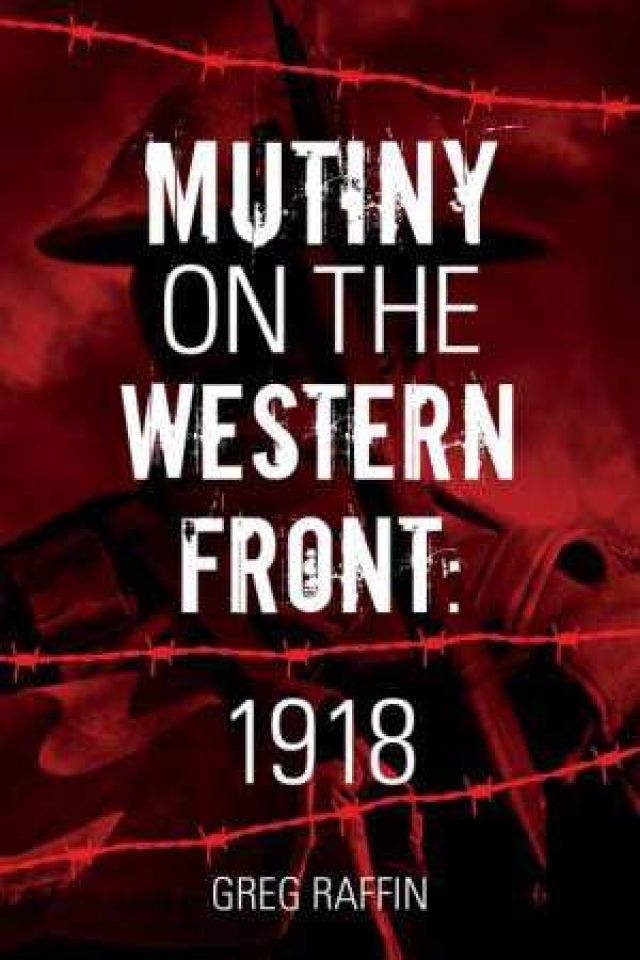
Mutiny on The Western Front: 1918
Greg Raffin
Big Sky Publishing, 2018
216 pages
For those who may have been living in a cave without electricity for a while, it may need pointing out that the Australian establishment likes to conduct extravagant khaki-and-slouch-hat festivals to annually celebrate the gore-filled Australian invasion of Gallipoli on April 25 in 1915.
Anzac Day thus receives high-rotation airplay, but we hear nothing, however, of a day - September 21 in 1918 – that, of all the days of Australians at war, is actually worth acclaiming, It was the day when Australian soldiers did something very unwarlike - disobeying orders, resisting authority and walking away from their assigned role of killing and dying on the corpse-strewn stage.
As amateur historian and military boffin Greg Raffin writes in Mutiny on the Western Front, such “combat refusal” was the rebellious recourse of over a hundred Australian soldiers on that day.
After continuous front-line service for months, and after a protracted and vicious battle immediately prior to the mutiny, soldiers of the 1st Battalion were suffering from extreme battle fatigue and a stupefying war-weariness. Near the village of Hargicourt in France, after being promised relief in the rear, they were informed that their well-earned rest had been abruptly cancelled and they were being called back to the front immediately.
Enough is bloody enough, they said, refusing their new combat orders. This constituted mutiny – a refusal of orders that threatens the hierarchical command-and-obey foundation of the entire military system, and its political-economic war-fighting aims.
This was intolerable to military authorities. The 115 soldiers involved were duly court-martialled. Charged with mutiny (punishable by firing squad), they convicted on the lesser charge of desertion (thus avoiding the bad PR that executing over a hundred Australian men would have had on military recruitment back home).
They were jailed in England, with the privates getting three years hard yakka in prison and their sergeants and other NCOs copping five-10 years.
Their mutiny was atypical for the Australian Army, although the mutineers conformed to the standard military template for Australian soldiers: they were not especially troublesome (78% of them had no, or just one, disciplinary black mark), they were often awarded for bravery, and they were committed to performing well and supporting their comrades (many earned military promotion).
They were prepared to question orders that promised nothing but useless sacrifice for pointless objectives, but they invariably got on with the business at hand.
With their civilian, working-class backgrounds (most were manual urban or rural workers), they saw soldiering as a “job of work” to be done well. If anything, these particular mutineers had done their soldiering job too well – the penalty of such diligence being to get more work like it, such as being thrown back into the frontline at the first opportunity.
In return for all this, the soldiers expected to be given a “fair deal” in their new military-employment setting. Thus, when their long-overdue rest break was rescinded, the soldiers took what was essentially industrial action over being denied a fair go.
The mutineers were, after all, workers-in-uniform. Although Raffin avoids the issue, they likely brought strong trade union values and principles from their civilian workplace into the army. Trade unionism was widespread in Australia at the time. The overall union membership rate for male workers the highest in the world, at around 50%, and much higher for the blue-collar industries most of the men came from.
Raffin also avoids the potentially revolutionary dimension to the soldiers’ response to egregious exploitation. He finds mitigating circumstances in the purported confusion attendant on poor communication of the order to urgently reassemble for the trenches (which was, acceptably, the mutineers’ legal defense). However, the mutineers knew what they were doing – taking, in solid unionist style, an unauthorised smoko, away from the mud, sleeplessness, artillery, bullets and dismembered bodies.
They knowingly contravened orders. They engaged in mutiny.
This is to their credit, but Raffin, a heavy user of cliché in the service of military-patriotic orthodoxy, is reluctant to see the Anzac legend too sullied by mass eruptions of anti-militarist insubordination. His historical treatment of the mutiny denies the mutineers full conscious agency of their act, and the implicit revolutionary challenge to authority it contained.
Russia’s Bolsheviks, after all, encouraged mutiny, and desertion, and absence-without-leave, and fraternisation, and truces-from-below, and soldier unions, for very good, political, reasons.
Anzac Day or Mutiny Day: the choice of the former says a great deal about just who is on the side of killing and dying in the cause of conquest. In this inter-imperialist scrap, the first blood taken and shed by Australian troops was the invasion of German [now Papua] New Guinea, and Germany’s other Pacific colonies, on behalf of the British Empire.
The latter says much more praiseworthy things about who isn’t on that side but who, with exemplary exceptions, get to be bossed around to do the dirty work of the militarists.